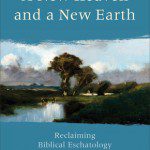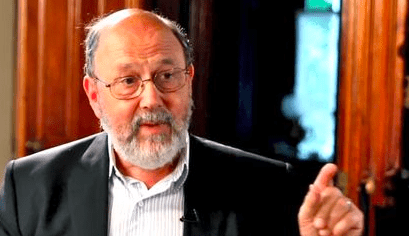 Here’s the order of our Christian faith: Jesus lived, Jesus died, Jesus was buried, Jesus was raised, and Jesus was exalted. The exaltation entails the “ascension” of Christ and most of our gospel theology, not to mention gospeling itself, never mentions the ascension at all. Yet, the gospel in The King Jesus Gospel, where I don’t emphasize ascension as much as I might have, is all about ruling — so it is worth exploring just what the ascension is all about. To do this we will look at the fine book by Matt Levering, Jesus and the Demise of Death, where he has a chp on the ascension called “Sitting at the Right Hand of the Father.”
Here’s the order of our Christian faith: Jesus lived, Jesus died, Jesus was buried, Jesus was raised, and Jesus was exalted. The exaltation entails the “ascension” of Christ and most of our gospel theology, not to mention gospeling itself, never mentions the ascension at all. Yet, the gospel in The King Jesus Gospel, where I don’t emphasize ascension as much as I might have, is all about ruling — so it is worth exploring just what the ascension is all about. To do this we will look at the fine book by Matt Levering, Jesus and the Demise of Death, where he has a chp on the ascension called “Sitting at the Right Hand of the Father.”
How vital is ascension in your theology? How vital is Christ’s present rule? What do you think of Levering’s exposition of “right hand” through the lens of Aquinas?
There’s a philosophical/theological problem addressed first, but this problem morphs into a fine exposition of the Son’s presence at the “right hand” of the Father.
Here’s the problem: how can Jesus be raised in the flesh to the right hand of the incorporeal Father? Some scholars of the Old Testament contend that YHWH, or the God, of the Old Testament, is corporeal — that God has a body so when it says there is a “right hand” there really is a right hand. Those scholars tend to think Christian scholars have swallowed up the original meanings of Israel’s God into later Hellenistic categories. It’s rather obvious in Christian theology that God is incorporeal, and Aquinas makes a golden Aristotelian point: it would mean divine limitation and potentiality when such are not characteristic of God.
So for Aquinas the “right hand” of God is accommodation.
All of this leads to an exceptionally interesting discussion of “sitting” and “standing”: How can Christ be sitting at the right hand and, as Stephen said, “standing” as well? Aquinas plumbs both as metaphors — something that for many of us is so patently obvious we might wonder why discuss it — and shows sitting refers to judgment and standing refers to advocacy. (And there’s a bit of a discussion that Irenaeus sees Jesus as God’s “right hand” itself in the Incarnation.)
So “right hand” refers to the glory of the Godhead; the beatitude/bliss of the Father; and judiciary power.
Then Levering explores Rev 3:21 and Eph 2:6, as well as Matt 19:28, that we will reign with the Son at the right hand, and that this is no passing image but something potent and fundamental to Christian eschatology: as those who are in the Son, who have been raised in and with him to the Father’s right hand, we will reign with Christ and share in the glory of the Son at the right hand of the Father.











